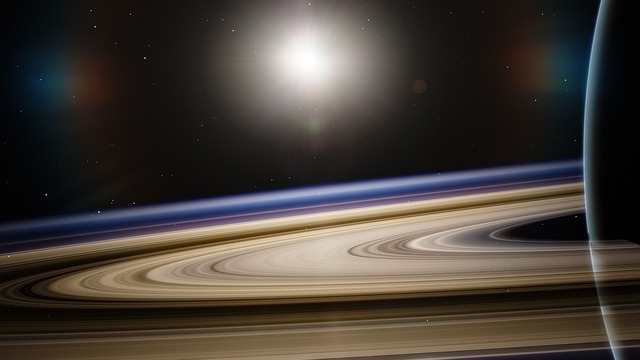
Discovered by Galileo Galilei in 1610, Saturn and its rings have been fascinating the humankind since ancient times. The Cassini and smaller Huygens probes, launched on October 15th 1997, provided us with unprecedented details of one of the most photogenic planets in our solar system, revealing its beauty and inspiring our sense of wonder.
On September 15th 2017, just weeks shy of its 20th birthday, the Cassini dove into Saturn’s atmosphere, burning up and disintegrating like a meteor, after its successful mission to provide us with observations of Saturn, as well as its rings and moons, from a closer viewpoint than ever before. To celebrate Cassini and its journey here are some key findings and discoveries.
Extraterrestrial Life could be possible on Saturn’s Moons
In a stable environment where liquid water, a source of energy and organic molecules composed of oxygen, nitrogen, carbon and hydrogen-molecules are present, life is thought to be possible. Saturn’s moon Enceladus has been found to host a global liquid water ocean, with salts and simple organic molecules, as well as intense geological activity near the moon’s south pole where jets of icy sprays spew from crevasses.
Hunter Waite, principal investigator on one of Cassini’s instruments, said that “Cassini has shown that Enceladus satisfies almost all the present criteria that defines habitability” encouraging us to “go back and look for life”. The moon Titan is also thought to have a global ocean of water beneath its thick and icy crust. It is this cold surface which has been found to host liquid hydrocarbons that left scientists to wonder whether it could host exotic forms of life.
Earth-like Landscapes
Branching channels and steep canyons shaped into Titan’s icy surface resemble landscapes as seen on Earth. Shorelines and sheltered bays lead into lakes and seas, and pebble shaped ice-water rocks are formed.
The flowing liquid hydrocarbons found on Titan’s surface by the Huygens probe are thought to be responsible for such landscapes. Wind-sculpted dune lands are also found on Titan’s equatorial regions and volcano-like mounds have been spotted. Showcasing incredible landscapes and even seasonal changes, Titan provides a window into the origins of life on Earth billions of years ago.
Saturn’s Rings and Moons
Whilst the exact origin of Saturn’s rings is still under consideration, we have learned through studies that the rings were formed many different ways.
They are on average 10m thick, though the particles range in size from grains of sand to mountain-sized blocks, and some of Saturn’s rings are thought to be formed by interaction with the moons by acquiring material from meteorite-hit moons. An outer ring is believed to be created by the water ice ‘jetted out’ by Enceladus as some of the moon’s plume material leaves the ground fast enough to escape towards the ring, rather than fall back onto the surface.
Some of the moons also have bewildering shapes. Atlas looks like a typical flying saucer, Pan reminds us of a ravioli, whilst Mimas resembles the Death Star from Star Wars.
A Celebration of Science and Technology
The Cassini-Huygens mission is an international collaboration involving three space agencies (NASA, ESA and ASI) and 19 countries. The Cassini spacecraft carried 12 instruments on board. The Huygens probe, which hitched a ride to Titan on Cassini’s back, had six more. This collaboration between multiple teams will become an exemplary model for future missions.
